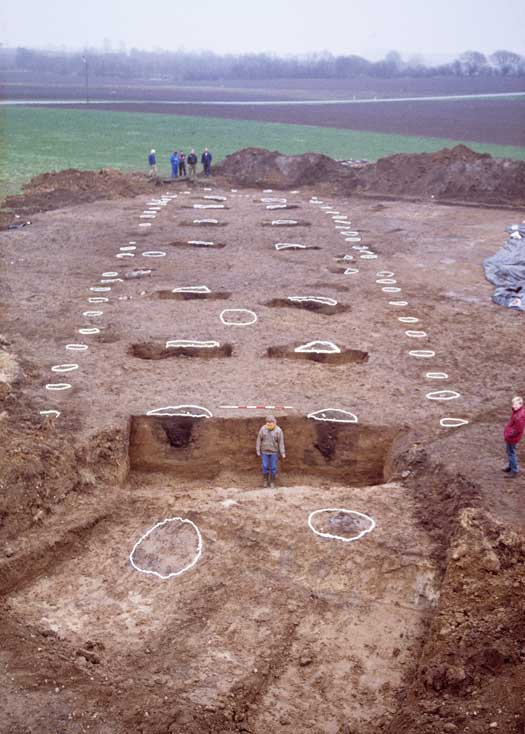Gudme – the prince’s hall
In 1994 several of the large hall buildings in the central part of the Gudme settlement were excavated. The first hall was 47 m long and 10 m wide and exceptional in all respects. The roof was born by eight sets of sturdy posts, the walls were made up of wide planks and the entrance in the middle of the house was as broad as a gateway. In the middle of the house was a large open room. The hall was built in the second half of the 3rd century AD and was in use for around 100 years. Next to the hall was another hall, which was smaller, but equally solidly built. In fact, a closer examination revealed that six buildings of different character superseded one another over a period of 2-300 years.
The finds from the area of the imposing buildings were also of a very special character. 115 Roman silver coins and many fragments of gold jewellery lay spread over the area, or were found in post holes or pits associated with the halls. Several of the pieces of jewellery originate from southeast Europe and may have been produced by the Ostrogoths in the 4th century AD. Home-produced luxury items, such as a small silver man’s mask and fragments of a silver neck ring decorated with sheet gold, are objects that are normally only found in the richest graves of the period. These finds reflect the aristocratic environment that we can imagine existed in the hall at Gudme.


